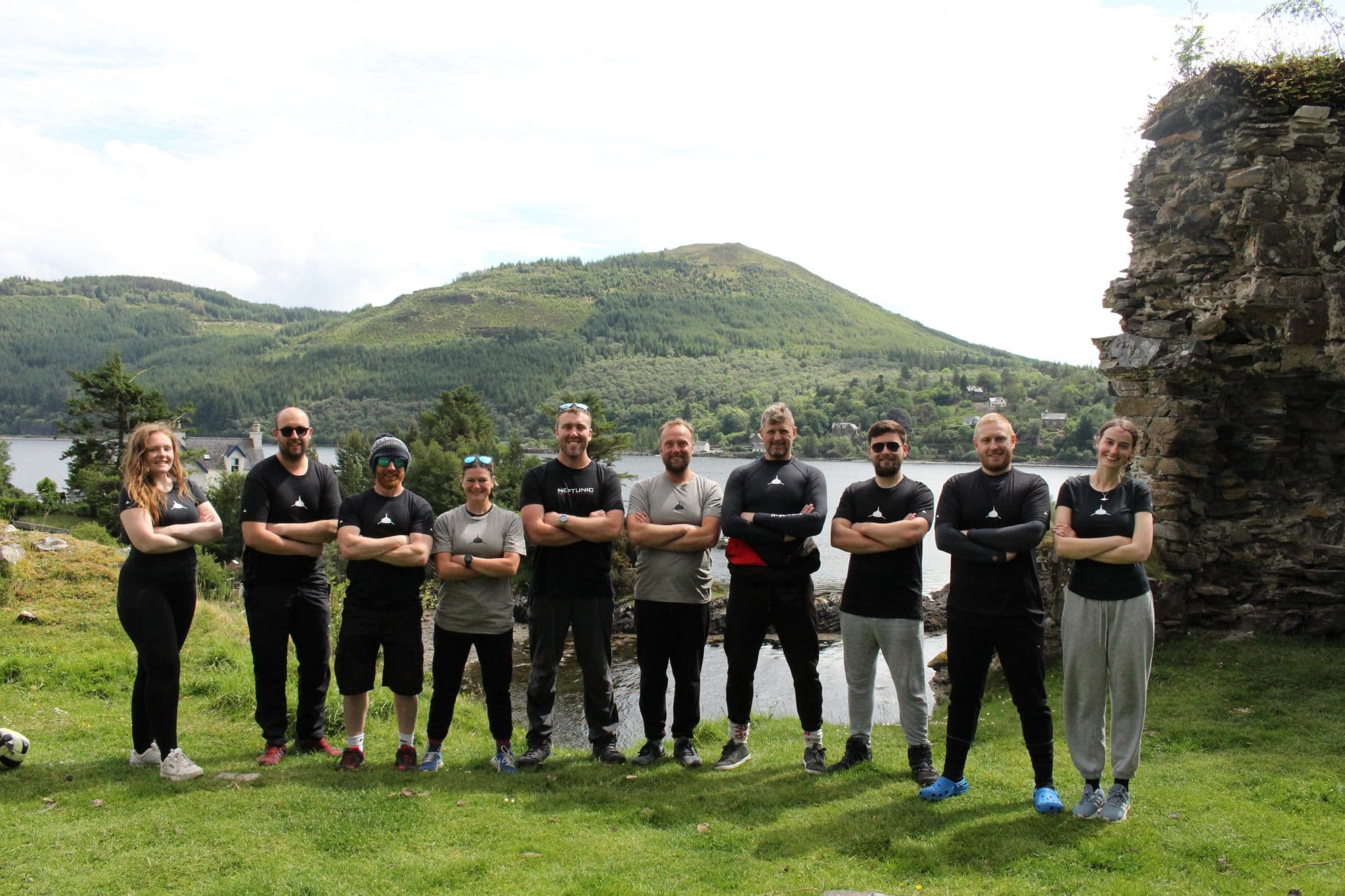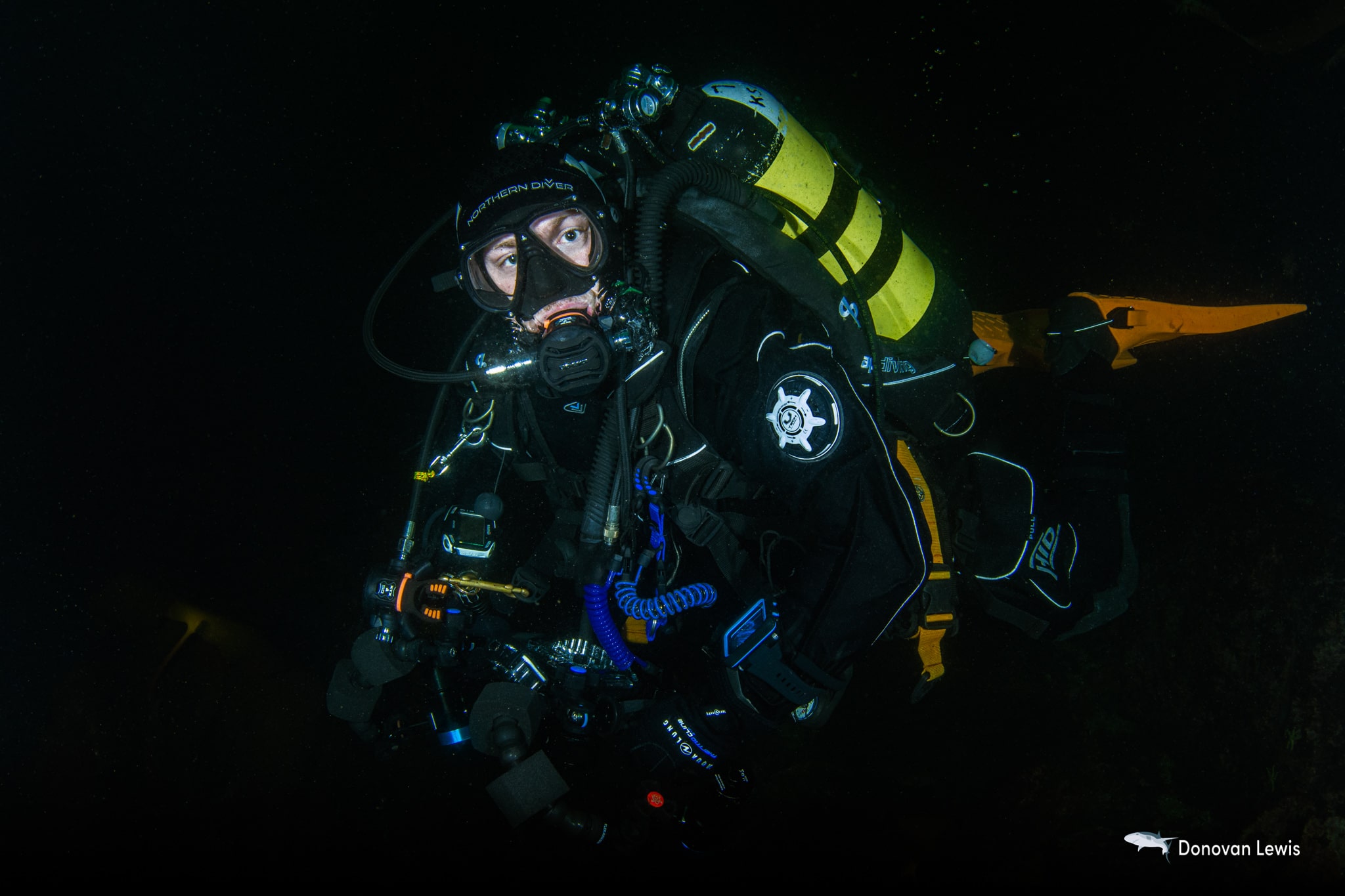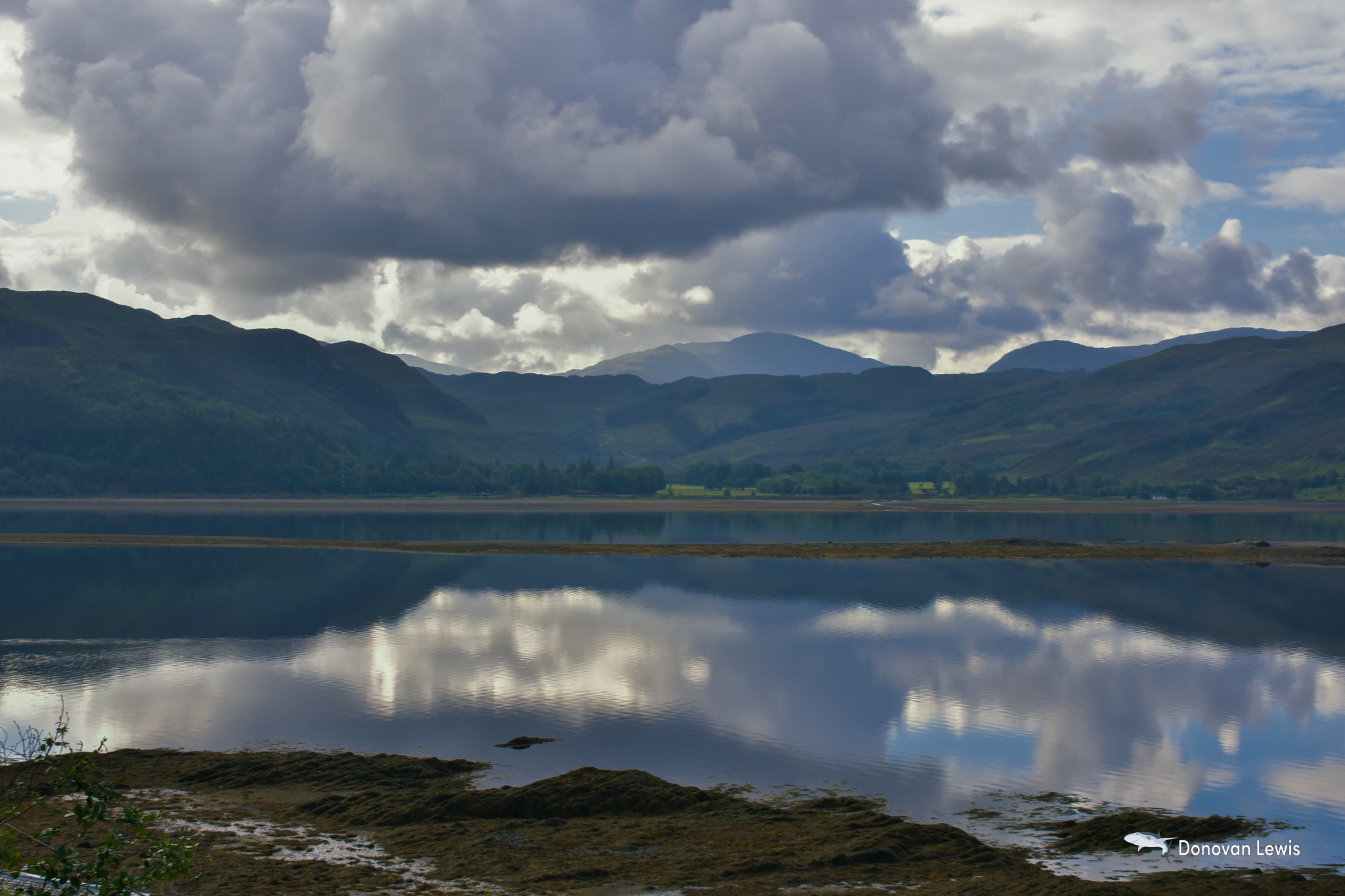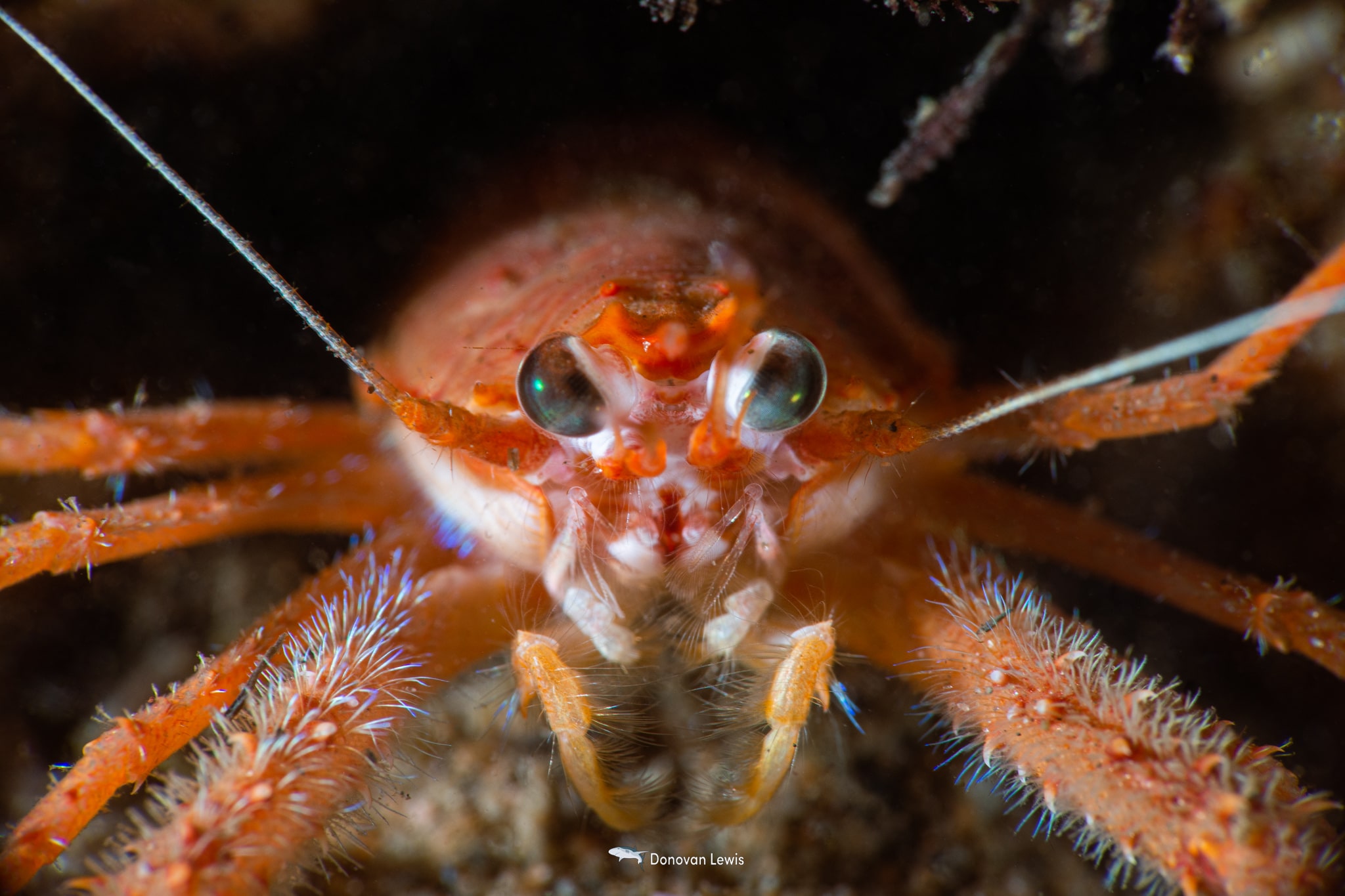Marine Life & Conservation Blogs
Western Ecology Tour Expedition Report: Stats & Scotland

During June 2021 a team of us Photographers, Filmmakers, Scientists and Divers took part in the Western Ecology Tour, an expedition that involved diving some of ‘The Best’ of the West Coast of the UK. The Expedition took place between the 17th and 29th of June, and we traveled to 3 key locations throughout the UK. The expedition started out in the Lochs of Scotland and finished along the Pembrokeshire coastline.
The expedition was led by Andy Clark of ATND Services and @fancy_a_brew_podcast. He sought out talent, sponsors, and expertise to aid him in achieving the goals he had planned for the expedition.
The expedition had three main aims; To support scientists who are working to better understand and protect our coastlines, wildlife, and ecosystems, to tell the unseen stories of our hidden coastline, and to promote sustainable adventures.
The expedition had a number of sponsors with all of them supplying equipment to the WET Team, these sponsors included Northern Diver who supplied Cylinders and Dive Lights and a Northern Diver bags for the Crews equipment, Analox who supplied a Nitrox Analyser, Dryrobe who supplied Dry Robes to members of the WET Team, GearAid supplied Cleaning and Repair equipment, Stream2Sea Supplied Alcohol Hand Sanitiser, Neptunic supplied T-Shirts and Rash Vests and Modena Journals supplied Journals to each member of the WET Team to make notes throughout the expedition.
Other sponsors included OThree who donated an array of items for Raffle Prizes and Finisterre who donated a £150 Voucher also for a raffle prize.
A prize raffle was run leading up to the trip, this raised £2,005 with £397 being given to each of the 3 projects that were supported, and the rest going towards supporting the team throughout the expedition. To reduce costs and minimise the teams carbon footprint, we lived life as simply as we could, which we did by staying at campsites.
In total the team collectively covered around 12,500 miles, with travelling taking between 5 – 10 hours to travel between each area of work.
Expedition Stats
- Collective Miles driven – 12,500
- Dive Sites Visited – 12
- Max dive time – 74 Minutes
- Collective Total Dive Time – 30.7 Hours / 1,847 Minutes
- Max Depth Reached during Expedition – 34 Metres
- Camp sites visited – 3
- Collective Midge Bites (Scotland) – Unknown (Possibly Hundreds)
- Largest Item of Pollution removed – Oil Drums
- Projects Supported – 3
- Total money raised during fundraiser – £2,005
- Money raised for each charity – £397
Scotland
In Scotland, our team were supporting Shark & Skate Citizen Science Scotland, with Chris Richard and Dr Lauren Smith. Chris and Lauren are working alongside fisherman and the local community to better understand the movements of the Flapper Skate, an animal that was once in abundance, hence why it used to be called the Common Skate, but it is now classed as a Critically Endangered Species. Chris & Lauren have managed to identify an egg laying site of the Flapper Skate but are unsure of how many animals are using the site and with the surrounding area being used for fishing, it puts the site at risk. Thankfully the specific site is closed to fishing and even diving, Chris & Lauren are working to try and better understand the Skates and learn more about their movements as this will help them place better protections on not just the site itself, but also the routes the Skates are using in and out of the site.
The one thing they mentioned is that the local community are an almost untapped source of local knowledge and resources. Due to the rarity of Flapper Skates Chris and Lauren have put together a Facebook page where local divers, walkers and nature enthusiasts can report their sightings of Flapper Skates and other Shark & Ray species.
We left from Andy’s house in Wigan for around 10:30am and it took us around 10 hours to travel up and arrive at The Wee Campsite which is located on the shores of Loch Carron. As soon as we arrived, we were mobbed by thousands of Highland Midges which resulted in some members of the team having between 10 – 100 midge bites on a single arm. We were warned about this before heading up but we weren’t expecting the sheer amount of them.
The campsite was however situated amongst some of the most breath-taking landscapes and vistas that the UK has to offer. Once we had all set up camp and eaten, it was time to set up our cameras and make sure that we were packed and ready to set off for 9am the next morning.
The First day included diving the shores of Loch Duich with the first Dive Site being outside the Ratagan Youth Hostel, this had a gentle sloping seabed with a muddy bottom. Here lies a huge amount of Short-Clawed Squat Lobster, Brittle Stars, Harbour Crabs and Jellyfish. This dive was unbelievable in terms of the sheer amount of life and is a Macro Photographers dream with life that was not only in high abundance but were also confident allowing you to truly take your time in getting the shot.
The second Dive Site is known by the unfortunate name of the Rubbish Dump, this dive site sits below a small lay by that is known for dumping rubbish, and when you go underwater you see why. The wall was covered in rubbish that ranged from plates, fishing line, car tyres, and even more shocking, was the sheer amount of animal remains with skulls and bags of bones littering the seabed. Even with this sheer amount of waste present at the site, there was life clinging to the debris, from crabs who made makeshift homes beneath the rubbish, Lauren even found a Mermaids Purse that had been wrapped around discarded fishing line but after Lauren did a quick check, she concluded that the egg wasn’t hindered and rather than try and move it and damage the egg she decided to leave it to develop.
After the dive at the Rubbish Dump, Chris spotted what was first believed to be an Otter but as a surprise sighting it turned out to be an invasive American Mink who swam past the team with what was believed to be a Rockling in its mouth, only a few shots were able to be taken before it darted under some rocks.
The final Dive site of the first day is known as School Bay, this is once again a dive site with a muddy bottom. The mission on this dive was to find and photograph a Fireworks Anemone and Sea Pens. The dive site is essentially a bowl that drops to around 25 metres. Chris advised us to follow the slope down into the Bowl at a depth of 20-25 Metres and here we found huge amounts of life from Sea Pens, Sea Whips, Long-Spined Sea Scorpion and of course we found Fireworks Anemone. This site was being swept by a gentle current which was shown by how many filter feeding animals that were present here.
The only problems that we ran into on this site, was entry and exit from the water, as it was over a very rocky beach, followed by shallow areas with thick algae, so extra care was taken when walking and swimming with cameras.
After day one the team returned to the campsite and settled down, after eating and preparing cameras for the second day, to dive briefings for day 2 which were delivered by Chris and Lauren.
Day two in Scotland was a day of drift dives which first lead the team up to Conservation Bay a short drive from the campsite and a short walk down a slope to a gentle shore entry. The dive started on shallow kelp bed, but with a short swim out however had us swimming out into a gentle drift dive, the walls here were covered in Dead Man’s Fingers, Kelp and Anemones. Ollie managed to get some incredible footage here of the walls and life that clung in the gentle drift.
The second dive was another short drive to Castle Bay, a beautiful dive site which had Strome Castle overlooking the bay that we were diving in. The current on this dive was much faster, however manageable when we were trying to capture imagery and footage of the site. The walls on this site were once again adorned with Dead Man’s Fingers, Anemones, and Common Urchins, however the drift was fast enough that it lasted for around 20 minutes before slowing in much slower water. The wall at this point flattened out and became a gentle sandy floor with huge amounts of flatfish, decorator Crabs, Moon Jellyfish and Nudibranchs. This area alone would have constituted a dive all on its own due to the abundance of life that was present.
The final dive of day two was a quiet one with only two members of our team going down for this one, as other members of us went off to photograph the site from above water and conduct drone shots for the Expedition film that is currently in production. It was Chris and Ross who decided to get in for the final dive of the Scottish leg and they dived on a huge Maerl bed, Maerl is a hard Seaweed that forms huge carpets on the seabed and creates a diverse habitat for other wildlife, they reported back after the dive after seeing Nudibranchs, Butterfish and Flame Shells amongst the Maerl beds. Scotland was finished off with Chris and Lauren giving their interviews about what they do at Shark & Skate Citizen Science Scotland, along with some time to take images of some of the expedition’s sponsors.
After the final dive we spent an hour or so filming and taking photographs of expedition sponsors, and the general scenery before heading back to the campsite for the evening. The evening was spent with us chatting about the amazing diving we’d had during the Scottish leg and spoke about the next stop on Expedition WET’s itinerary, this was of course beautiful North Wales.
Tune in for the next entry of Expedition WET’s Trip report where I’ll be collaborating with Co-Scubaverse blogger Jake Davies, where we’ll be talking about Project Seagrass and about what the team saw and achieved during this amazing leg of the journey.
Header Image: WET Team in Neptunic gear. Photo Credit – Hannah Rose Milanković
Blogs
Saba’s Plan for a Coral Comeback

Saba has an exciting new initiative to restore its coral reefs. This new project, running from 2024 to 2026, will focus on reviving key species in the island’s underwater ecosystems. With a collaborative team from the Saba Conservation Foundation (SCF) and Van Hall Larenstein (VHL) University of Applied Sciences, the project aims to restore both corals as well as sea urchins.
This initiative is centered around coral restoration, specifically reviving two essential coral species—staghorn coral (Acropora cervicornis) and elkhorn coral (Acropora palmata). By mapping parent colonies and using a technique known as coral gardening, SCF will create and maintain coral nurseries. These corals will eventually be outplanted at key reef sites around Saba to not only expand the number of coral colonies, but also provide essential fish habitat. The project focusses on installing coral nurseries, training staff with the newest techniques and starting with the restoration of key reef sites.

Reef Cleaners to the Rescue
It’s not just corals getting a makeover—this project also shines a spotlight on the essential role of grazers, particularly sea urchins. VHL is leading the charge on cultivating and restocking two key sea urchin species, West Indian sea egg (Tripneustes) and long-spined sea urchin (Diadema), known for their ability to keep algae in check. By removing algae, which are important competitors of corals, they help the coral to thrive. By restoring these “reef cleaners,” Saba’s project will give corals the breathing room they need to grow, setting the stage for a healthier, more balanced marine ecosystem.
From Tiny Urchins to Big Goals
The project will be funded as part of the Dutch Government’s Nature and Environment Policy Plan (NEPP) 2020-2030 for the Caribbean Netherlands, a comprehensive initiative aimed at conserving and restoring the unique natural environments of the Dutch Caribbean islands, including Saba, St. Eustatius, and Bonaire. This project is aiming for big milestones: build and maintaining coral nurseries, the expansion of urchin cultivation facilities, and the creation of a dedicated research center. By 2026, the project hopes to ramp up coral and grazer restoration, with the ultimate goal of extending these efforts across the Dutch Caribbean. By linking local initiatives to broader regional goals, Saba’s restoration project promises to leave a lasting impact on both the environment and the community.
Find out more about the DCNA at dcnanature.org.
Blogs
Reef-World marks two decades of marine conservation: strengthening impact amid coral reef threats

Empowering ocean stakeholders to tackle future challenges and ensure the survival of coral reefs and humanity
2024 marks the 20th Anniversary of The Reef-World Foundation’s tireless efforts for global coral reef conservation. The UK charity is the international coordinator of the UN Environment Programme’s Green Fins initiative, known as the leading voice in sustainable marine tourism. Today, Reef-World released its 2023-2024 Impact Report outlining a year of substantive growth and impact in its marine conservation programmes.

Impact Report Highlights:
- Impressive improvements in environmental behaviours to protect coral reefs by the marine tourism industry as the global participation of Green Fins increases.
- Continued capacity building for government and NGO staff to effectively manage marine tourism activities in Asia, Caribbean and Red Sea regions.
- For the first time in Green Fins’ 20-year history, tourism operators have achieved ‘Best Environmental Performer’ status by demonstrating the lowest possible environmental impact in their environmental assessments. In 2024, three dive operators achieved this challenging milestone.
- Significant increases in global participation of Reef-World’s innovative digital conservation tools.
- 138 Green Fins dive operator members achieved the strict threshold for PADI Eco Center recognition.
- Developed four new educational materials and translated two into 16 languages to support the marine tourism industry in achieving sustainability targets.
- Establishing a new Reef-World Development strategy and recruiting new roles – Development and Programmes Managers.
- Reef-World’s board welcomes new Chair and Trustees strengthening organisational leadership.

Reef-World started as a one-person mission to inspire and empower communities to act in conserving and sustainably developing coral reefs and related ecosystems. Today, the team of 12 continues to meet this mission by inspiring and empowering the global marine tourism community to be exemplary sustainability leaders by using the Green Fins guidelines and tools to simultaneously use and protect the world’s precious reefs.
In April 2024, the fourth global coral reef bleaching event was confirmed. Reef-World’s work has never been more urgent as the marine environment, and the benefits they provide humanity, continue to be eroded by global threats. The reduction of local threats, like those from the marine tourism industry, is an essential step to ensuring a future where coral reefs survive and continue to support the millions of people who depend on their ecosystem benefits. Reef-World’s work buys time for coral reefs and related ecosystems to be resilient to the impacts of global threats.
“Right now our corals are facing the greatest fight of their existence as the terrifying predictions of the steps towards their complete extinction are starting to come true. But all is not lost, reefs are resilient and they have existed on this planet for millions of years. We must take action now, to buy time for reefs by reducing threats facing them and allowing them to react and adjust to the changing environment they need to survive in.” – Chloe Harvey, Executive Director
Looking Forwards:
Like coral reefs, the Reef-World team needs to be resilient in the face of the complex challenges of the conservation sector. Reef-World has invested significantly in developing a Culture of Care to ensure the well-being of its team on a daily basis, continuing to be an exemplary employer to enable its team to best achieve the mission for coral reef conservation.
With the foundations of a Culture of Care and organisational development laid, Reef-World is emerging from the end of a natural organisation life cycle, that brings the challenges of growth and scale, stronger than ever. With a new strategy in place to generate much needed resources, Reef-World is excited for the opportunities to leap forward, continue to scale our impact and lean into new innovations and untapped opportunities for marine conservation.
We continually strive to become a forward-thinking organisation that delivers on our goals and commitments to our stakeholders with fresh approaches and not being afraid of steering away from a “normal approach.” This approach is not only applied to our programmes of work but also internally and carries over to our Culture of Care for our team.” — JJ Harvey, Operations Director

The Reef-World Foundation is immensely grateful for the continued support of its grant funders: UN Environment Programme, IUCN’s Blue Natural Capital Financing Facility, Adventure Travel Conservation Fund, PADI Aware Foundation, and World Nomads Footprints Program.
Reef-World would also like to express its gratitude to international partners whose vital support has resulted in significant tangible benefits for our work and mission: PADI; Professional SCUBA Schools International (PSS); Explorer Ventures; 1% for the Planet; ZuBlu; Snorkel Venture, GSTC; Dive O’Clock; Seven Dragons; DiveAssure and Eco Beach, without whom these achievements would not be possible.
The full 2023–2024 Annual Impact Report is available on Reef-World’s website.
-

 News2 months ago
News2 months agoIconic SS United States to become the World’s Largest Artificial Reef
-

 News3 months ago
News3 months agoBook Review – 52 Assignments: Underwater Photography
-

 Gear News3 months ago
Gear News3 months agoDYNAMICNORD – New German diving brand enters the British market
-

 News3 months ago
News3 months agoExploring Cenote El Pit: A Diver’s Dream
-

 Gear News3 months ago
Gear News3 months agoTry BARE drysuits (and maybe even win one!) this Friday with Sea & Sea at North West Dive Fest
-

 Marine Life & Conservation3 months ago
Marine Life & Conservation3 months agoBook Review: Coral Triangle Cameos
-

 Blogs2 months ago
Blogs2 months agoDive the Egyptian Red Sea this Autumn with Regaldive
-

 News3 months ago
News3 months ago2024 Ocean Art Underwater Photo Competition Announced






















